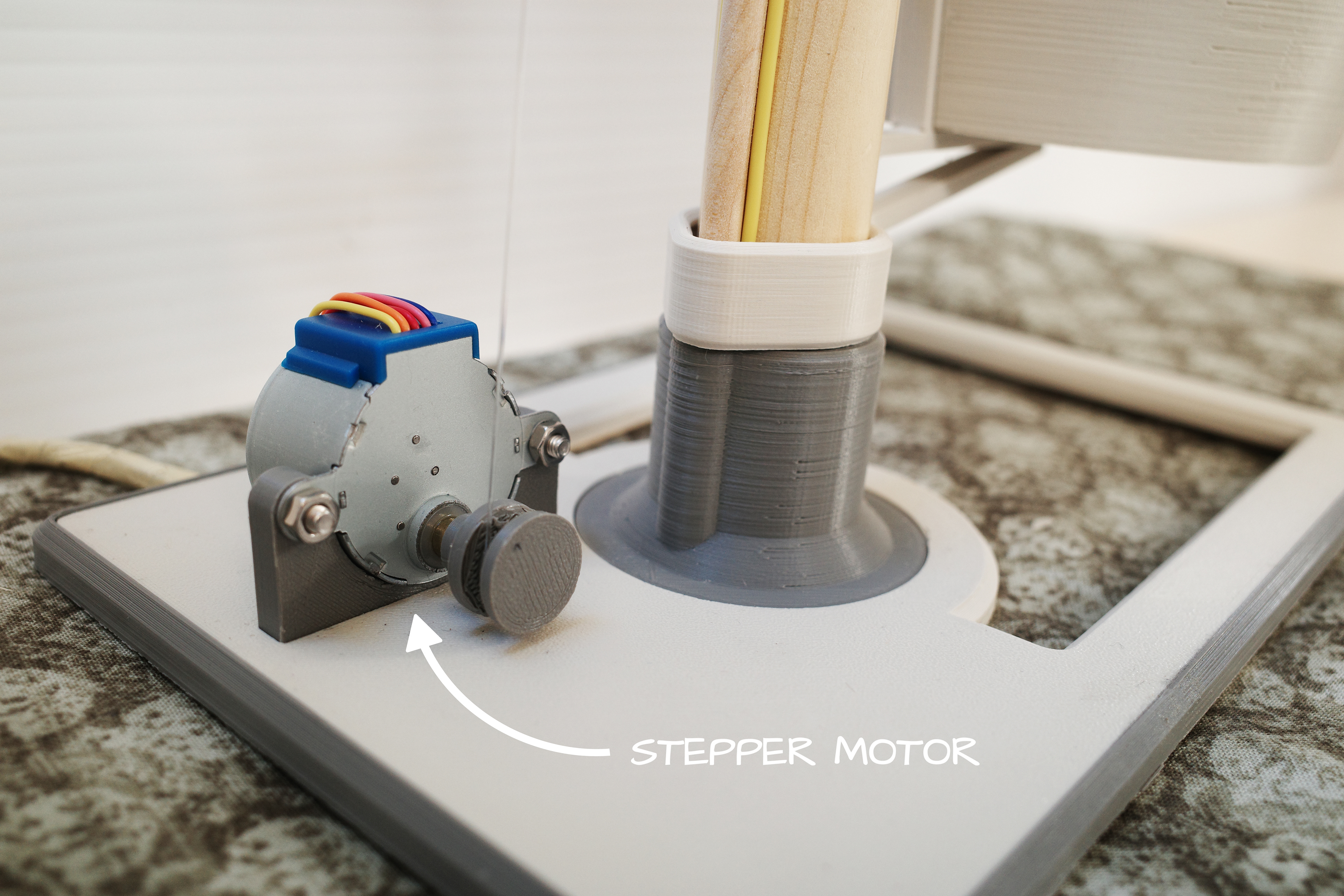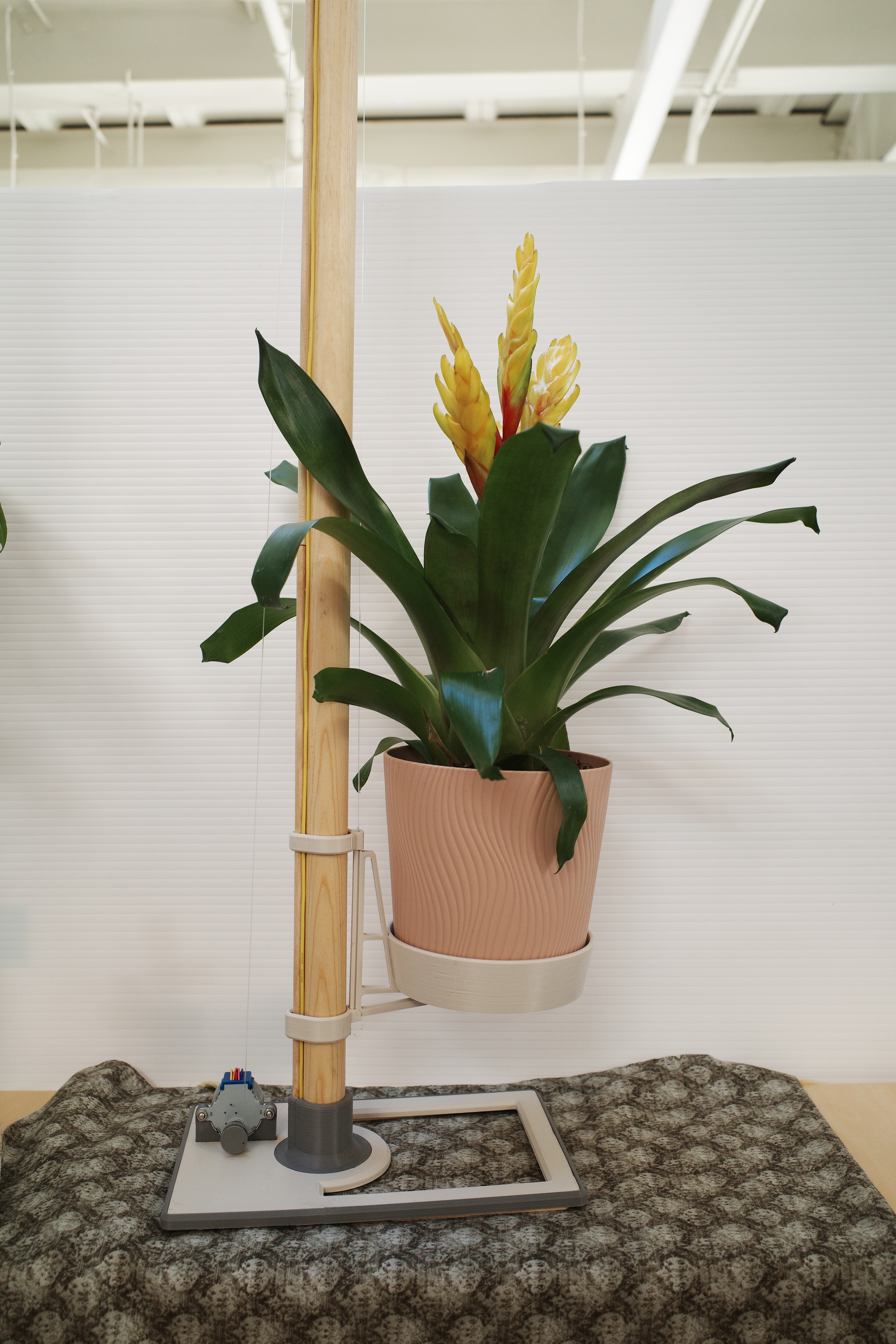As we spend less time outdoors, we spend more investing in our indoor living space. Taking the pandemic into consideration, I’ve noticed a trend in interior decoration: the house plant. I ask, what is the purpose and how can I design for this? At its core, every house plant depends on two essential ingredients: water and light, both requiring human attention to facilitate. The market has designed many indoor facilities for supplementing water and light for house plant life: lamps, irrigation systems, etc. Rather than looking at replicating a previously engineered solution, I started my line of inquiry by questioning how life itself has solved these problems in its 3.5 billion years of research and development. This methodology is called Biomimicry. In this context, it can be defined as the design of structures and systems that are modeled around biologic principles. Through the use of a photocell sensor, stepper motor, and Arduino, I prototyped an simple "artificially intelligent" machine that attempts to enhance the natural phenomenon of light-oriented growth.


The concept is designed to be an elegant product that acts as a foundation for any indoor potted plant at home, the office, or studio. The primary consideration of this product is the human experience, which for this user has developed a strong relationship with the plant. The user wants to see their plant healthy, which in turn makes them happy, creating a loop of delight for both. This idea occurred after purchasing my first indoor plant, but later realizing that I did not have a window to provide direct sunlight. However, above me was a skylight, to an angle was a skylight. The problem was the plant needed to be lifted to receive direct sunlight. I conceived of a concept to raise and lower the plant via ambient light levels, empowering the plant to move autonomously and enhancing my experience as a plant owner. The structure is 3D printed, neutral warm, off-white, and gray with a 7/8”x36” wooden rod. The pully system uses a high tensile material. Under the top cap is a small wheel to help lift the plant with low friction over a long period of time. The intent of this design, both structurally and visually, is to put the focus on the plant, not the mechanism, despite the exposed motor which helps visualize the system.
Rather than focusing on irrigation, synthetic light, or stabilized environments, this artificially intelligent system uses principles from biomimicry to create a solution that provides the implication of bionic strength. When recognizing the connection between the idea’s conception and the end result, I hope the viewer sees the harmonious relationship between the object of focus, the methodology, and the solution.

